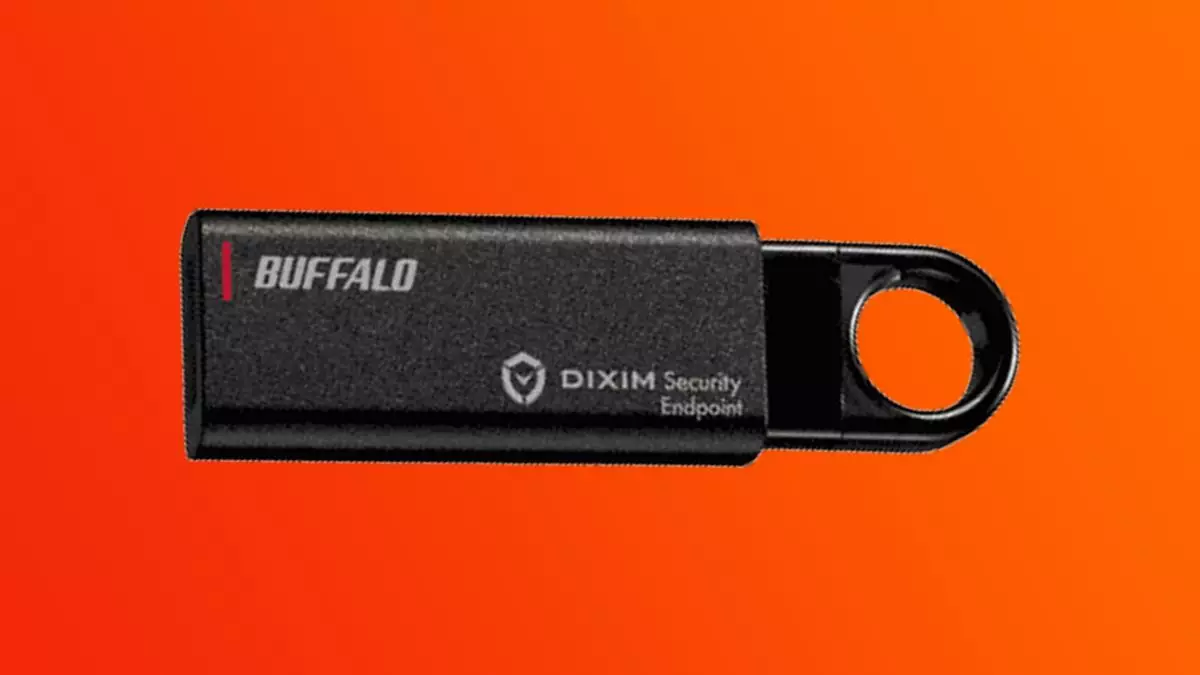USB flash drives, small and unassuming, often go unnoticed in a world rife with cybersecurity threats. However, seasoned users and cybersecurity experts know that these tiny devices can serve as gateways for malware and data breaches. The introduction of the Buffalo RUF3-KEV aims to address these concerns, providing a more secure portable storage option. This article will delve into the security features of this drive, explore the implications of USB-based cyberattacks, and reflect on the broader landscape of USB security.
At the forefront, the Buffalo RUF3-KEV integrates a series of advanced security measures designed to bolster user confidence against potential threats. Central to its capability is the DiXiM Security Endpoint, an embedded anti-malware system that continually scans files stored on the drive. This means that, unlike traditional USB drives that simply act as passive storage, the Buffalo drive actively works in real-time to identify and mitigate security risks.
Moreover, it is equipped with a built-in antivirus scanner that scrutinizes any data transfers to flag potentially harmful files. This dual layer of protection represents a significant evolution in USB technology, underscoring a much-needed shift towards proactive security measures. Enhanced by password authentication, the drive stands ready to protect sensitive data from unauthorized access. With available capacities of 16 GB, 32 GB, and 64 GB, users can select a size that aligns with their storage needs without compromising security.
While these features are commendable, it’s important to consider their limitations. Even the most sophisticated cybersecurity tools are vulnerable to exploitation. A healthy skepticism remains in order, especially when using a device that has previously been in untrusted hands. The instinct to err on the side of caution is widely justified, as numerous data breaches stem from trusting a device that could harbor malicious software.
Recent news has spotlighted the vulnerabilities tied to USB flash drives, especially in high-stakes environments. For instance, the cyberespionage group known as GoldenJackal was reported to deploy USB-delivered malware in scenarios that circumvent traditional network defenses. This highlights a critical lesson: even the most secure systems can be compromised through physical media like USB drives, directly bridging the gap that conventional network security protocols aim to maintain.
The peril intensifies with the basic human behavior of randomly connecting found USB drives to personal devices. A startling 2016 study revealed that approximately 50% of individuals are willing to plug in USB drives discovered in public spaces. It raises questions about cyber awareness, especially in an era where data privacy concerns dominate public discourse. Despite increased education on cybersecurity, the flickering curiosity that compels someone to connect a mysterious USB drive remains ever-persistent.
In response to growing threats, it’s refreshing to see manufacturers like Buffalo prioritize built-in security features for flash drives. While the RUF3-KEV is only currently available in Japan, its success may inspire a broader trend in the hardware industry. As users demand more secure portable storage options, there is hope that innovations like those introduced by Buffalo will become standard practices across the market.
The ideal future of USB drives would combine comprehensive security measures with user-friendly designs. Driving away the anxiety of plugging in aUSB drive, where users can trust the technology to safeguard against potential threats, should be a priority for manufacturers. A universal market response could cultivate an environment where the use of USB drives does not compel a sense of vertigo or paranoia with every connection.
While the Buffalo RUF3-KEV stands as a beacon of hope in the fight against USB security threats, users must appreciate the inherent vulnerabilities that these devices can exude. As manufacturers innovate and elevate security standards, it is crucial for users to remain vigilant and informed about the risks tied to USB technology. Only through a blend of advanced technology and conscious user behavior can we foster a secure digital landscape.


Leave a Reply